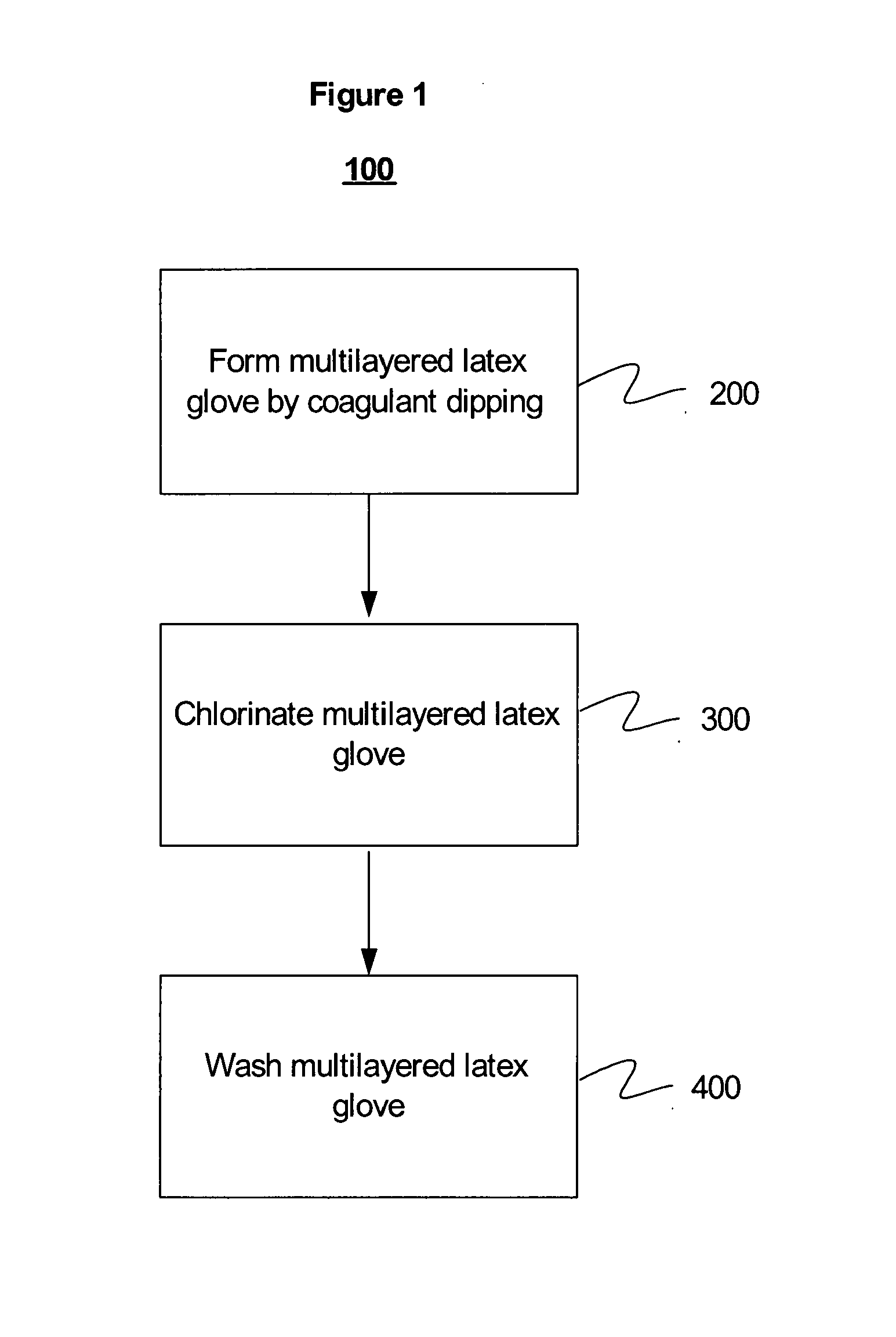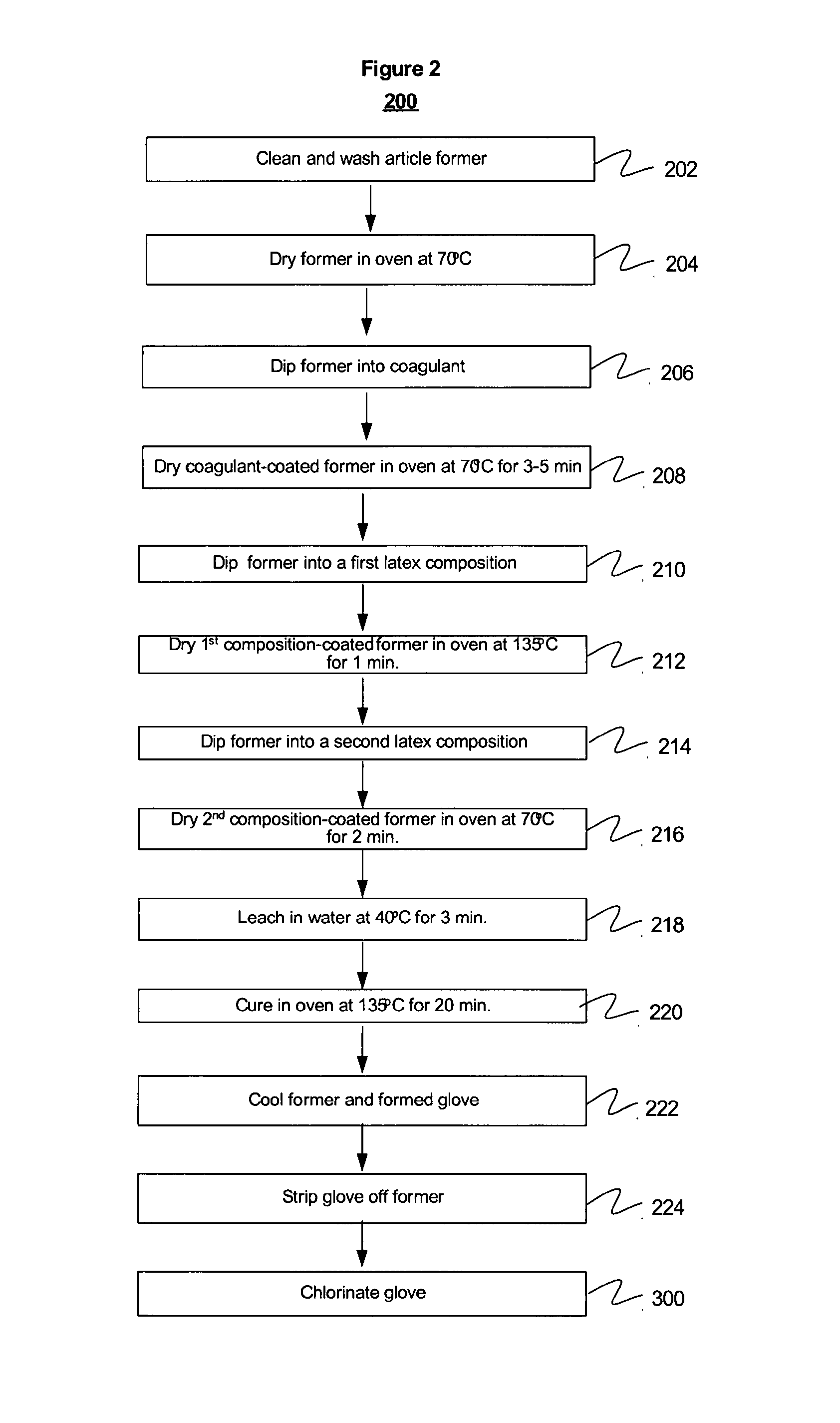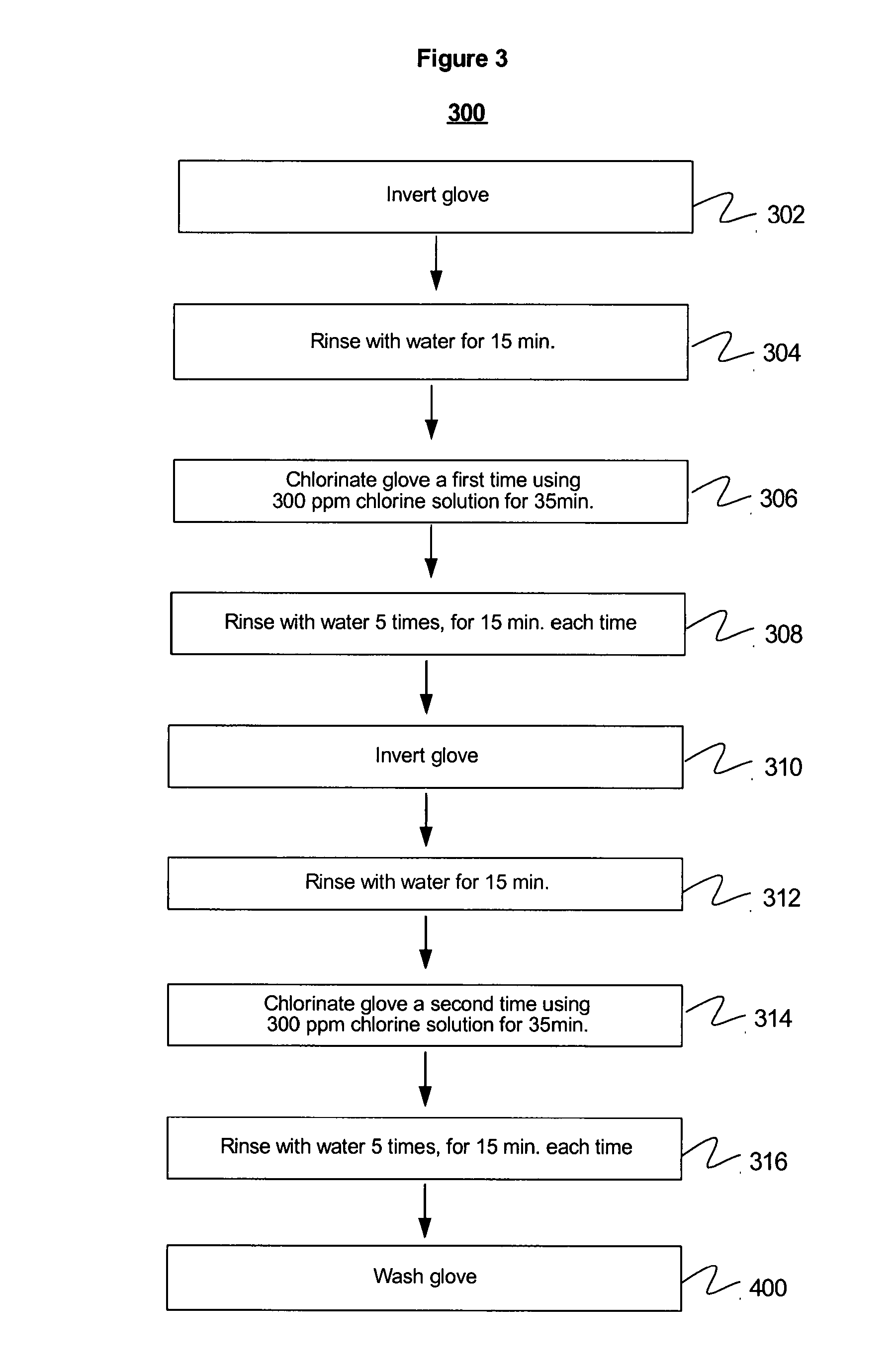Antistatic gloves and process for making same
a technology of antistatic gloves and process, applied in the field of elastomeric articles, can solve the problems of contamination problems, interfere with the precision of handling instruments, and natural rubber does not exhibit good static resistance, and achieve the effects of maintaining effective and desirable antistatic properties, desirable comfort and feel properties, and reducing the number of elastomeric gloves
- Summary
- Abstract
- Description
- Claims
- Application Information
AI Technical Summary
Benefits of technology
Problems solved by technology
Method used
Image
Examples
example 1
Comparative Static Testing of Gloves
[0040]Three types of glove samples were tested for static resistance properties and compared. The gloves were composed of:
[0041]1) 100% natural rubber;
[0042]2) 100% nitrile rubber; and
[0043]3) two layers, the outermost layer comprising 80% nitrile rubber and 20% natural rubber, laminated directly to an innermost layer comprising 80% natural rubber and 20% nitrile rubber prepared using the process described below.
[0044]For the two-layered glove, one glove sample was tested for static resistance properties. For 100% nitrile rubber gloves, eight different commercially available gloves and six different lab dipped gloves were each tested for static resistance properties (see Table 1). For 100% natural rubber gloves, different gloves were tested for static resistance properties. Each glove sample was tested for surface resistivity, volume resistivity and static decay time (SDT) as set forth above. For each glove sample, three specimens (prepared from t...
examples 2-6
Detailed Preparation of Gloves
[0050]The method 100 used in preparing examples 2-7, comprises:[0051](1) preparing a latex composition composed of a majority of nitrile rubber for a first layer and a latex composition composed of a majority of natural rubber for a second layer,[0052](2) dipping and forming the gloves 200, and[0053](3) chlorinating the gloves 300 and making powder-free clean room gloves.
Preparation of Latex Compounds
[0054]Two latex compositions were prepared and blended, each comprising a nitrile rubber latex and a natural rubber latex. A first latex composition included a majority of a nitrile rubber latex and formed a first layer, the outer layer, of the antistatic glove. A second latex composition included a majority a natural rubber latex and formed a second layer, the inner donning side, of the antistatic glove.
First Latex Composition
[0055]Raw nitrile rubber latex (composed of about 39% acrylonitrile, about 58% butadiene, and about 3% carboxylic acid) was stirred ...
example 2
[0066]A multilayer nitrile / natural rubber latex laminate glove with an outer layer comprising 100% nitrile rubber latex and an inner layer comprising 100% natural rubber latex was prepared in a manner similar to the procedures described above. The first latex composition comprised 100% nitrile rubber latex (and 0% natural rubber latex) and the second latex composition comprised 100% natural rubber latex (and 0% nitrile rubber latex). This particular glove showed delamination of the two layers immediately after heat curing in the oven.
PUM
| Property | Measurement | Unit |
|---|---|---|
| elastic modulus | aaaaa | aaaaa |
| elongation | aaaaa | aaaaa |
| elastic modulus | aaaaa | aaaaa |
Abstract
Description
Claims
Application Information
 Login to View More
Login to View More - R&D
- Intellectual Property
- Life Sciences
- Materials
- Tech Scout
- Unparalleled Data Quality
- Higher Quality Content
- 60% Fewer Hallucinations
Browse by: Latest US Patents, China's latest patents, Technical Efficacy Thesaurus, Application Domain, Technology Topic, Popular Technical Reports.
© 2025 PatSnap. All rights reserved.Legal|Privacy policy|Modern Slavery Act Transparency Statement|Sitemap|About US| Contact US: help@patsnap.com



